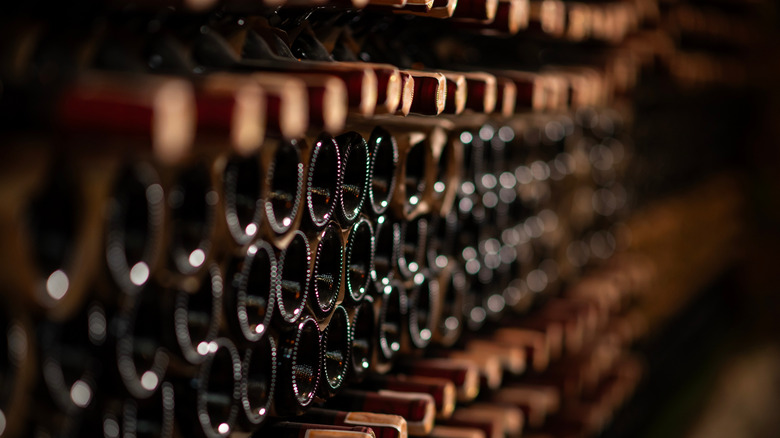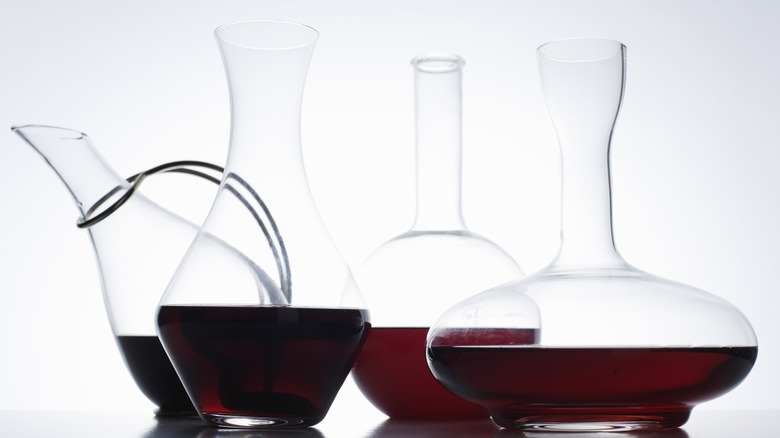The Faux Pas That's Been Sabotaging Your Favorite Red Wine
One of the more difficult parts about wine consumption is its delicacy. Wine can be a delicate liquid — its intricacies are vulnerable to external factors that may impact the taste. For instance, the shape of the glass, the age of the wine, and the temperature of the bottle will all significantly impact its taste. For the latter, Anthony Reynaga, chef de cuisine at Tiki Taka, gave us his expert advice on the perfect temperature to serve a bottle of red wine. "For optimal enjoyment most experts will suggest serving red wine somewhere between 52 and 54 degrees [Fahrenheit]," Reynaga told The Takeout.
Wines within this temperature range are most apt for proper oxidation. "Any more or less and it will affect how the wine drinks, whether that is on the nose or palette," Reynaga continued. Red wines in particular benefit more from oxidizing, as it opens up their flavors to a more palatable and enjoyable level.
What is oxidation?
Oxidation may sound like one of those superfluous, snobby wine terms — but it's crucial to a proper tasting. Oxidation refers to the chemical process that occurs between the oxygen in the air and your wine. A bit of oxidation mellows out unpleasant flavors and brings other taste complexities to the surface. You'll sometimes hear people refer to it is as aeration or letting the wine breathe. While oxidation and aeration sound like complicated processes, all it takes is either letting a bottle sit without its cork, swirling a glass before sipping, or passing your wine through a decanter before pouring.
Though incorporating oxygen can be what makes or breaks a bottle or glass of wine, it can also go too far. When wine has been exposed to too much oxygen it will begin to smell and taste like vinegar. To tell if a wine has gone bad due to over-oxidation, look out for sour aromas or brick-like colors.

